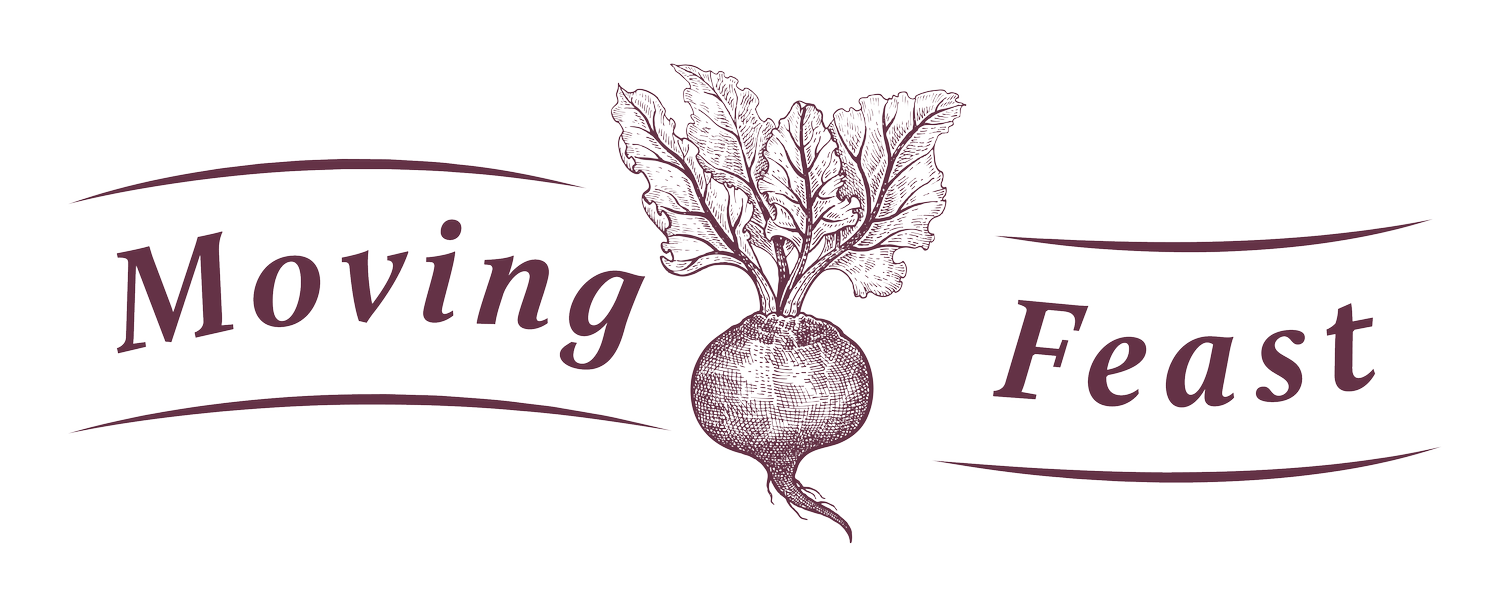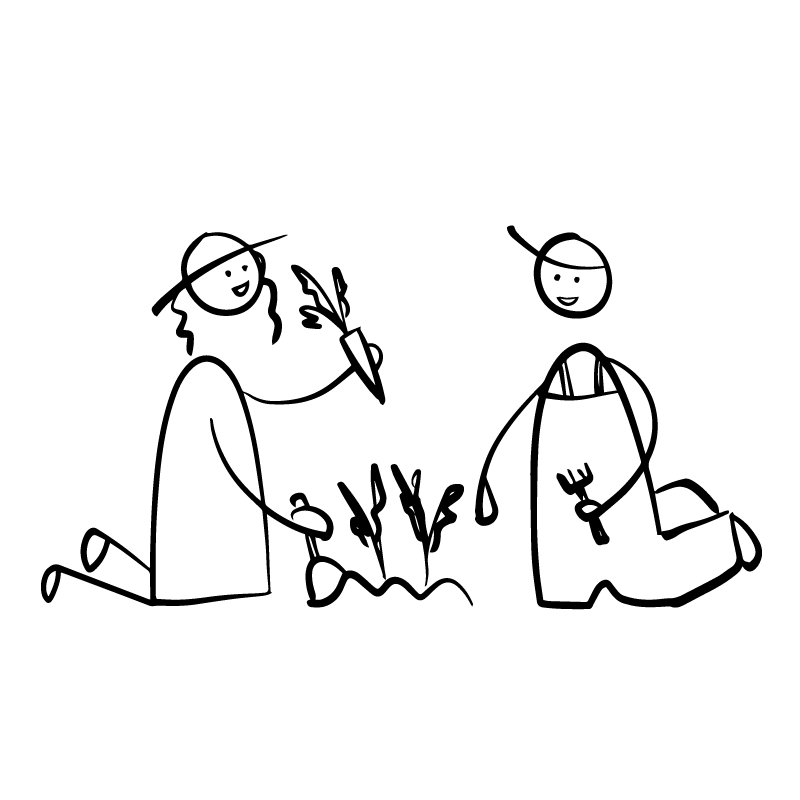Our approach
The food system is vast, complex and ever-changing, tied to ‘wicked’ problems of inequality and climate change. We need to work cross-sector, collaboratively and at local levels to shift deeply rooted issues.
Food is the great connector for the health of people and planet.
However, our current food system trajectories threaten the health of people and planet and the support of environmental sustainability.
Food supply crises – alongside fuel shortage and cost of living crises –exacerbate societal vulnerabilities and threaten livelihoods in climate-vulnerable economies (World Economic Forum, 2023). The food sector is also a major contributor to climate change – and thus to the vicious cycle of food insecurity and resource depletion – with crop and livestock production responsible for an eighth of anthropogenic emissions, and land clearing contributing another eighth.
The food sector therefore has a major role for mitigating climate change, drawing down carbon through changes to agricultural production, food preparation, consumption, and waste (Moving Feast, 2021).
In Victoria, there are many factors at play contributing to our broken food system, including:
Loss of abundant First Nations food-bowls and lack of recognition and respect for traditional owners, and Indigenous foods and food system knowledge;
Broadscale agricultural production and urban sprawl stripping arable land for sustainable production;
Small producers and regenerative farmers struggling to maintain profit margins against the Coles and Woolworths duopoly;
Food insecurity meaning two-in-five Victorians worry about being able to afford food;
The human and financial toll of obesity and food-related diseases;
Omissions regarding state planning provisions;
Catastrophic climate change causing droughts and floods, taking a human and financial toll on rural and regional communities.
(Moving Feast, 2021; Donati & Rose, 2022)
Moving Feast’s strategy
Our strategy expresses what we’ve learned over three years, and where we are headed next to address the challenges of our broken food system. It has been co-produced with partners, and through discussions with critical friends from industry and community. Read on for key parts of our strategic approach.
Our Impact Goal: a connected, fair and regenerative Victorian food system
To make transformational change to the food system, we need to dream big and audaciously. It can’t be incremental or simply an ‘upgrade’ of the existing system. A true Theory of Change starts with an Impact Goal that we all agree we are working towards, then we work backwards from there, doing what will bring about the desired outcomes.
Moving Feast’s Impact Goal was first expressed in 2020, when we got started. It is evolving through co-creation with community and ‘critical friend’ networks. Read more about how we measure our impact.
CONNECTED FOOD SYSTEM
Integration of for-purpose enterprises and values-aligned collaborators; strong community engagement; innovating for disruption.
FAIR FOOD SYSTEM
Food security for all; farmers and producers treated fairly; inclusive employment pathways.
REGENERATIVE FOOD SYSTEM
Access to land for growing; earth-friendly food production and consumption; connected to First Nations knowledge.
How we’ll get there: Challenge-led innovation
‘Challenge-led innovation’ sounds technical and jargon-y, but in short it’s a directional approach for change. It involves coordinating people, processes and resources to experiment and prototype, shaping and executing projects that align to one or more major Challenges.
The Challenge-led approach is driving big innovative leaps forward for public bodies in Australia and globally, including CSIRO (Australia), Missions València (Spain), Camden Council (UK), and Vinnova (Sweden) (Conway et al., 2021; Hill, 2022).
Five emerging Challenge themes
Challenges are fields of action and innovation where projects happen, with outcomes creating momentum towards the Impact Goal.
Moving Feast has identified five emerging Challenges, stated below. These are starting points for discussion, and examples of big, audacious goals we want to see happen by 2035.
We are working closely with diverse actors: partners, lived experience communities and more – to co-create these Challenges, and build new networks and momentum for action.
Challenge 1: Open & optimised collaboration
Create a world-class enabling environment for food system innovators
Challenge 2: Reimagining food futures
Unleash creative energy to dream of delicious new feasts and food futures
Challenge 3: Clean & green food economies
Grow local food enterprises and double Victoria's social enterprise contribution
Challenge 4: Diverse & inclusive jobs
Create new clean and green job in Victoria's food system
Challenge 5: Net zero food
Accelerate Victoria's progress to Net Zero by building Net Zero food demonstration projects
New forms of leadership, funding and governance will unlock our chances of success
Taking a Challenge-led approach requires “...new and expanded forms of leadership, new models of governance to drive collective learning and continuous adaptation, and courageous collaborations that are truly diverse and inclusive, involving new partners” (Bason, 2022).
We are pursuing suitable funding and governance models in conversations with government, philanthropy and industry to make this approach possible.
“The overwhelming instinct of a system in decline is to search around for innovations that will save it. But propping up the old system will not hasten the arrival of the new - and may make its eventual appearance all the more costly and painful.”
Our approach is place-based, community-centred, and highly relational
We know that shifting to this new approach will take time. We also know that diverse and inclusive participation is critical at every step to bring people along on the journey. This calls for big, bold collaborations of diverse actors – more than food system specialists, farmers and producers. Change needs involvement of communities with lived experience of the problems driving – and driven by – our broken food system.
This is why we’re so well positioned to do this work, because as social enterprises we have vast experience of working with communities experiencing disadvantage and injustice, doing ‘business for good’ to address social, economic and environmental shortfalls. We are excited to combine our collective deep knowledge and experience in the social enterprise sector and food system with other networks forging similar paths for food system transformation, including Open Food Network and Sustain.
We are also extremely appreciative for the endorsement of national and state peak bodies Social Enterprise Australia and the Social Enterprise Network of Victoria (SENVIC), and critical government, philanthropic and industry support helping us move forward for Victoria.
References
Bason, C. (2022). Beyond Government: Unleashing the Systemic Power of Design.
Conway, R., Clinton, N., Bellinson, R., Kuhn Von Burgsdorff, L., Cooke, A., van Spronsen, K., Groen, H., Smith, R., Cerezo, F., Thompson, C., Dew, S., Hill, D., & van Meeteren, N. (2021). Mission-oriented innovation in action: 2021 casebook.
Donati, K., & Rose, N. (2022). Growing Edible Cities and Towns: A Survey of the Victorian Urban Agriculture Sector.
Hill, D. (2022). Designing missions. Vinnova.
Moving Feast. (2021). Moving Feast Year 1 Report.
World Economic Forum. (2023). Global Risks Report.








